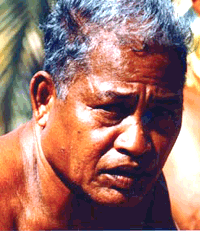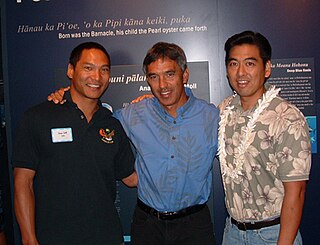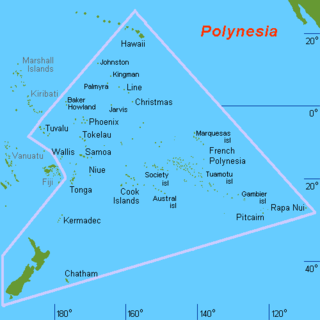Overview
According to the legend, Hawaiʻiloa was an expert fisherman and navigator. While out with a crew of men, they accidentally stumbled upon the island of Hawaiʻi which was named in Hawaiʻiloa's honor. Hawaiʻiloa returned to his homeland of Ka ʻāina kai melemele a Kane, "the land of the yellow sea of Kane" in order to bring his family back with him to Hawai'i. He then organized a colonizing expedition with his family and eight other skilled navigators. They settled on what is now the Island of Hawaiʻi, named in his honor. [2]
In Hawaiian mythology, Kāne is considered the highest of the four major Hawaiian deities, along with Kanaloa, Kū, and Lono, though he is most closely associated with Kanaloa. He represented the god of procreation and was worshipped as ancestor of chiefs and commoners. Kāne is the creator and gives life associated with dawn, sun and sky. No human sacrifice or laborious ritual was needed in the worship of Kāne.

Hawaiʻi is the largest island located in the U.S. state of Hawaii. It is the largest and the southeasternmost of the Hawaiian Islands, a chain of volcanic islands in the North Pacific Ocean. With an area of 4,028 square miles (10,430 km2), it has 63% of the Hawaiian archipelago's combined landmass, and is the largest island in the United States. However, it has only 13% of Hawaiʻi's people. The island of Hawaiʻi is the third largest island in Polynesia, behind the two main islands of New Zealand.
The legend contains reference to his children: Maui (eldest son), Kauaʻi (son), and Oʻahu (daughter) who settled on the islands that bear their names.

The island of Maui is the second-largest of the Hawaiian Islands at 727.2 square miles (1,883 km2) and is the 17th largest island in the United States. Maui is part of the State of Hawaii and is the largest of Maui County's four islands, which include Molokaʻi, Lānaʻi, and unpopulated Kahoʻolawe. In 2010, Maui had a population of 144,444, third-highest of the Hawaiian Islands, behind that of Oʻahu and Hawaiʻi Island. Kahului is the largest census-designated place (CDP) on the island with a population of 26,337 as of 2010 and is the commercial and financial hub of the island. Wailuku is the seat of Maui County and is the third-largest CDP as of 2010. Other significant places include Kīhei, Lahaina, Makawao, Pukalani, Pāʻia, Kula, Haʻikū, and Hāna.
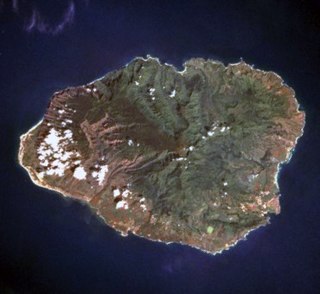
Kauaʻi, anglicized as Kauai, is geologically the oldest of the main Hawaiian Islands. With an area of 562.3 square miles (1,456.4 km2), it is the fourth-largest of these islands and the 21st largest island in the United States. Known also as the "Garden Isle", Kauaʻi lies 105 miles (169 km) across the Kauaʻi Channel, northwest of Oʻahu. This island is the site of Waimea Canyon State Park.
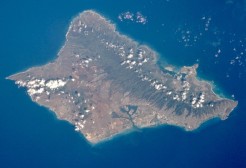
Oʻahu, known as "The Gathering Place", is the third-largest of the Hawaiian Islands. It is home to roughly one million people—about two-thirds of the population of the U.S. state of Hawaiʻi. The state capital, Honolulu, is on Oʻahu's southeast coast. Including small associated islands such as Ford Island and the islands in Kāneʻohe Bay and off the eastern (windward) coast, its area is 596.7 square miles (1,545.4 km2), making it the 20th-largest island in the United States.

The story of Hawaiʻiloa has received a great deal of attention from modern Hawaiians, as a realistic depiction of the settling of the islands, consistent with current anthropological and historical beliefs. Many people believe it is a validation of the veracity of ancient Hawaiian oral traditions.
However, the story of Hawaiʻiloa is attested only by late sources, such as the antiquarians Abraham Fornander and Thomas George Thrum. As they did not give their original Hawaiian sources, but only digests and compilations, we cannot be sure that the tale has not been slanted towards proof of Fornander's now discredited migration theories, or that it has not been elaborated by 19th century Hawaiians eager to stress the validity of their own beliefs.

Abraham Fornander was a Swedish-born emigrant who became an important Hawaiian journalist, judge, and ethnologist.

Thrum's Hawaiian Annual is a statistical compendium of Hawaiiana ranging from Hawaiian mythology to Hawaiian language to sites of interest in Hawaii, published by Star-Bulletin Printing Co.. The original research was compiled by antiquarian bookman Thomas George Thrum and first published in 1875 as The Hawaiian Annual and Almanac. Contributors to Thrum's Hawaiian Annual include the artist Bessie Wheeler.
Hawaiʻiloa is not mentioned in early Hawaiian historian sources like David Malo or Samuel Kamakau. Malo says there are many stories about the origin of the Hawaiians and cites some migration tales and some legends of indigenous origin. He does not mention Hawaiʻiloa. Kamakau says that the first man and woman were Hulihonua and Keakahuilani, and that they were created on Oʻahu.
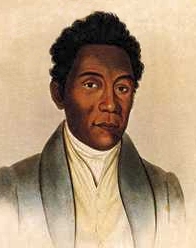
David Malo or Davida Malo (1793–1853) was a leading Native Hawaiian historian of the Kingdom of Hawaii. He became a Christian minister and founded a church.

Samuel Mānaiakalani Kamakau was a Hawaiian historian and scholar. His work appeared in local newspapers and was later compiled into books, becoming an invaluable resource on the Hawaiian people, Hawaiian culture, and Hawaiian language during a time when they were disappearing.



